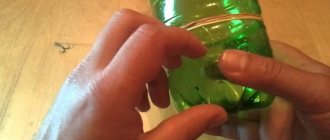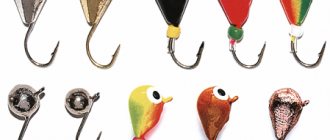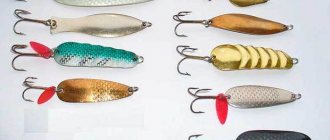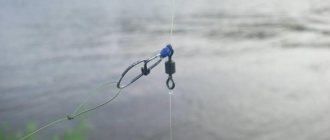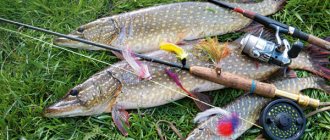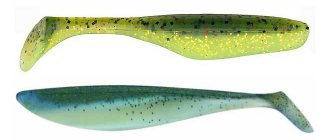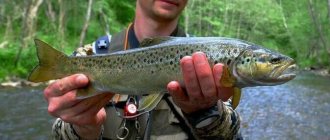The choice of artificial bait for fishing, first of all, determines the result of fishing. Modern fishing enthusiasts use a large number of different baits. The selection depends on the type of reservoir, as well as other conditions.
Without exception, all baits are divided into two main groups. One group is used for catching carp fish species, the second for carnivorous species. Nozzles are divided into artificial and natural origin.
Let's look at the nozzles, which we usually call artificial. Fishermen have learned to replace almost everything, without exception, with fish bait, with fakes. And thus bring it to the fish, counting on the fact that this one will certainly try it.
Let me note that in specific circumstances, for example, for certain seaworthy individuals. A prominent clean hook directly targets the bait. Probably not a movable plate, which archaeologists discover became the very first spinner for the ancient fisherman.
Later, the alloy became the main material used for a long time and seriously. For the purpose of producing artificial baits. Carnivorous individuals making an instant jerk do not have enough time to sniff and take a closer look at the dubious quickly running away object. Therefore, they grab fairly hard metal. Moving luminous pieces of iron were first used as objects for fishing under ice. Then, for a long time, they were preserved as basic and almost uniform, artificial baits.
At the present time, when a wide variety of baits are being produced, a large number of artificial materials are used. Almost all of them modulate real insects that live in a reservoir or end up there. During a period of crazy gluttony, which in some cases occurs due to one factor or another. The fish grabs on the fly, everything, without exception, escapes from it. If the fish is full or lazy, no little effort is required for the fisherman to find a suitable bait in his box.
Why are baits needed?
In total, there are about 20,000 species of fish. All of them, without exception, differ from each other externally, physiologically and in actions. The food consumed by different types of fish may differ. According to the type of feeding, fish can be divided into 3 main groups: omnivores, herbivores and predators.
The bait is chosen depending on what kind of fish you want to catch from a given group. When catching predators in general, small-sized live fish caught in the same place are used. In addition, artificial baits similar to small fish are used.
Artificial baits are used mainly for the purpose of catching predatory fish. The incentive for predators to attack unnatural prey varies. They are able to consider such bait as natural fish. Which they are used to using in food, or an elementary rival who has broken into foreign territory.
In certain cases, predators attack live bait only because they intuitively respond to its mobility. Artificial baits are made from the following materials: alloy, wood, rubber, plastic, polymer.
Other materials are also used, feathers, furs, cloth, and the like. Artificial bait can be equipped with a single, double or triple hook. In certain variants, a number of tees are present simultaneously, for example, on large wobblers.
According to the level of buoyancy, artificial baits are divided into 3 main groups:
- Shallow
- Deepening
- Suspenders
Shallow baits are used to imitate insects that have entered the river or unhealthy fish. Some have no chance of taking a deeper dive. Such baits are most quickly noticed by fish of the species that choose the advantage of staying on the surface layers of water. Not deep baits perform well in shallow areas of the reservoir.
Deepening baits are designed for the purpose of catching bottom species of predators, such as zander, perch and pike. These baits attract the interest of fish that are in the pits. Or he hunts for a trophy in the deep layers of a reservoir. The disadvantage of such attachments is that they easily get caught on all the plants on the shore and in the water, including snags. Which subsequently causes the line to break.
Suspenders - these baits have the ability to remain in the body of water. If they swim or drown, this action is performed slowly. However, there are baits that, when used correctly, constantly follow at a fixed depth.
Artificial baits are used not only to imitate small fish and insects caught in the water. They also have every chance of being similar to frogs, crustaceans, worms and other agents of aquatic fauna. For example, silicone donkey ears can serve as a sample. What can be visually perceived as exactly like a worm, a frog or a scallop.
Why do you need bait when fishing?
There are more than 20,000 species of fish in the world. They all differ from each other in appearance, physiology and behavior. The food that different breeds eat may vary. According to the type of nutrition, all fish can be divided into 3 main categories:
- predatory;
- omnivore;
- herbivorous.
The bait is selected depending on which of these categories you are going to fish. To catch a predator, live or dead small fish caught in the same body of water are most often used.
Artificial baits are also used that imitate the behavior of small fish (spinners, wobblers, etc.). Predatory species include pike, pike perch, perch, asp, catfish and other species.
Omnivorous fish feed primarily on plants, insects, mollusks, crustaceans, and other aquatic organisms. Some species, such as chub, also eat small fish. Omnivorous species also include carp, carp, crucian carp, bream, ide, roach, rudd and other species.
Herbivorous fish eat only algae and phytoplankton. The most common herbivorous species in our water bodies is the silver carp.
Oscillating spoon
The most popular artificial bait is the oscillating spoon. It modulates the swimming fish. Attracts the attention of almost all predatory fish. This bait has different weights and sizes. For the purpose of catching small predators, in shallow areas of the reservoir. A spinner with an approximate weight of up to 13 grams and a length of approximately 35 millimeters is used.
Large swaying spoons weigh up to 40 grams and are up to 125 millimeters long. With their help, large carnivorous fish are caught from depths of up to 5 meters and deeper. The swinging spoon shows itself to be an iron plate. As it moves through the body of water, it imitates a fish, thereby attracting a predator.
At one end, the swinging spoon is equipped with a triple hook. From the next edge it is wound to a fishing line or cord using a swivel and a fighting ring. Swinging lures have been used for a very long time. This artificial bait is especially in demand when trolling fishing. Today, collections of spinners include a colossal number of types of the most popular baits.
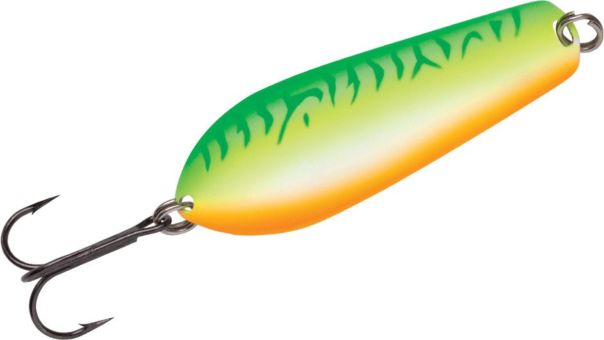
However, practically no innovations are in any way ready to push the oscillating spoon out of the ranks of the most effective baits. A large number of modern fishermen use this lure directly. Numerous fishermen give preference to them.
There is an argument that the effectiveness of an oscillating spoon is associated with the characteristic feature of its movement in the water. These movements are in no way similar to the actions of active fish. They are very similar to the movements of injured or sick fish. It has been established that predators hunt such fish.
It is possible to achieve significant results by using a swinging spoon in early autumn. Directly during this period of the year, the carnivorous fish fattens up. It quickly becomes saturated with various protein foods.
Fishing in the fall is quite effective when combining swaying and spinning spoons. They may be installed at a distance of 100-150 mm from each other. This trick makes it possible to simulate a predator chasing a small fish. A zander or pike simply cannot help but invade this environment.
They rush after the bait and become prey for the fisherman. Among the common oscillating spinners, it is possible to note the following manufacturers: Daiwa, Cusano, Taskmaster.
Main Types of Artificial Lures
Spoons
The desire to replace fragile live bait with another, more reliable bait probably led to the appearance of spinners in the practice of amateur fishermen, which made it possible to be ready for fishing at any time.
During the fishing process, it turned out that the most productive spinners are those that are capable of irritating a predator with their appearance and movement in the water (“play” of the bait). Therefore, the variety of spinners in design, size, color, shape and movement in the water is very large.
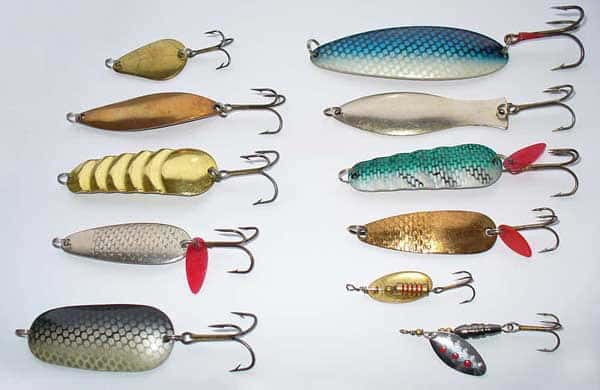
Most often, the spoon is an oval-shaped or elongated metal plate, equipped with a single (single-hook), double or triple hook.
When cast in water, such a spinner resembles a small fish and provokes a predator to grab it.
Even if its appearance does not resemble a fish, the vibrations in the water created by it reach the predator, whose attack reflex is triggered.
Spinner spoons are made from brass, copper, silver, chrome steel and other metals. Practice has shown that fish take most readily on silver spoons (it is not necessary to make them entirely from silver), but worse on chrome or stainless steel ones.
Posting an Oscillating Spinner. Video
Fishing with a spinner
This spinner is equipped with rotating petals; it arose later than swaying spinners. They quickly became famous, receiving a whole range of fair advantages:
Catching fish using a rotating spoon is much easier to master.
With the use of a spinning spoon, it is possible to catch not only predators, but also omnivorous fish.
These baits are exceptional for catching small predators.
Multifunctionality. The bait is equally effective on rivers with currents and quiet lakes.
The spinner has excellent sound properties. The spinning petals create a hum in the body of the water, thereby attracting fish. The vibration, appearance and power of the hum are determined by the shape of the petals.
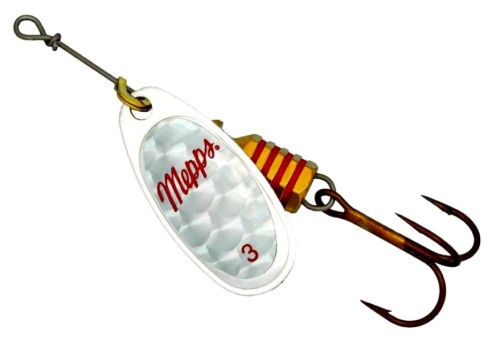
Equipment for silicone baits
There are several types of basic methods for installing silicone baits most commonly used by anglers. Thus, installation of a twister and a vibrotail can be carried out on a single, double, triple or offset hook, selecting an accessory only according to the dimensions and size of the bait. Often the rubber is immediately mounted on a stationary jig head or in combination with a Cheburashka. Other types of silicone are most often mounted on single hooks with an extended shank.
If installing a bait on a single hook does not cause any particular difficulties, then equipping a silicone bait with a double or tee is much more difficult and for this the fisherman will need a small amount of time to master the equipment and methods of equipment. After a couple of training sessions, the method of installation is quickly memorized and with the development of a stable skill, the fisherman manipulates the equipment with silicone hooks directly on the reservoir, right while fishing.
Spinner wobbler
Spinner wobblers are hard baits. Their appearance, type and actions simulate live fish or other likely prey for a predatory fish. They are designed to study different layers of the reservoir, as a result of which they have different levels of depth. They differ in the degree of buoyancy.
Floating wobblers during the posting period are deepened down to the working horizon. But during the break they will begin to float to the surface. This quality is advisable if caught in areas where there are snags or waste. In order for the wobbler to cross the obstacle, it is necessary to stop wiring.
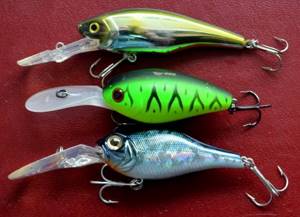
Suspenders differ in their intermediate buoyancy. They descend to a set depth and then stay there. Flickering before their eyes, they are ready to shake the half-asleep, stopped fish. For such wobblers, a leash with pauses is recommended. Predatory fish often like to grab when the bait stops.
During the pause period, sinking wobblers descend to the bottom, thereby resembling an unhealthy fish. Such ease of prey will attract every predator. In particular, such an action will be required according to the taste of the river nurse for pike. Drowning nozzles are comfortable in places independent of vegetation.
Other types of baits
In order to catch predatory fish in winter , butterfly caterpillars will be a good bait. They overwinter inside the hollow stems of burdock and wormwood. They are baited onto a hook in a similar way to hooking meat worms.
For catching chub, which is a type of large non-predatory fish, and salmon, May beetles and grasshoppers are excellent baits. They are killed before being attached to the hook. Although these insects are quite large in size, they are used with a float and weight in a fast current, otherwise they may float to the surface.
Certain types of butterflies can also serve as bait for fishing (for example, the moth is excellent for catching ide and chub). Another option would be caddisfly larvae. They can be found in shallow bodies of water on rocks or stems of coastal plants. To bait, the shell is removed from the larva and then placed on a hook. This larva is successfully used in sport fishing.
It is also worth noting dough baits, which are quite simple and popular . Some anglers prefer bait made from black bread, while others prefer bait made from white bread. Special additives are also used to enhance tactile qualities. True, this is unnecessary, but you need to pay attention to your hands. They must be washed well so that there are no traces of sweat and tobacco left, otherwise the bite will spoil or there may not be one at all.
The large, non-predatory fish willingly takes pieces of bread floating on the surface of the water and already hooked. They are also used for winter fishing at depth.
Vegetable baits
To catch non-predatory fish, various plant baits (barley, wheat, hemp) are often used. They take a short time to prepare. First, they are brewed, after which they are placed in a thermos for an hour or two, which is not tightly closed. It should be noted that the finished grains should not be particularly soft. Then, during fishing, several pieces are placed on the hook. Peas and beans are prepared and used in the same way. When securing a slipping bait, it is recommended to use a needle to set the hook, or alternatively use a sharp stem.
When winter fishing, complementary foods that include orange zest and oatmeal are successfully used.
Used as bait for non-predatory fish (especially carp) and potatoes. It is boiled until half cooked, peeled and, using a needle, baited onto a tee (as the best hook option) or a single hook. It is recommended to do preparatory feeding in the evening or a few hours before the start of fishing . Under the influence of the current, bread crumbs and other debris will be washed out of the feeder and settle near the location of the hook.
When catching particularly cautious non-predatory fish, a special rod holder is used; it helps position the fishing rod at a sufficiently high height without scaring away the cautious fish.
Among the large number of baits for fishing non-predatory fish species, here are a few more common ones:
- Bone marrow,
- roasting,
- clotted blood
- pieces of herring or liver,
- poultry intestines.
These lures are common when fishing in cold weather. By the way, they are also used by a number of predatory fish (burbot, eel, perch, and especially chub).
To attach live fish as bait, a hook-and-loop system is generally used, where a small holder hook hooks the bait fish behind the dorsal fin, while the main body of the bait is held in place by a loop across the fish. The hook intended for fishing is located on the side. Typically, fishermen use a pair of treble hooks as hunting hooks.
To catch pike with a bait attached in this way, you need to wait until the entire fin of the bait passes the mouth of the prey. This method of attachment involves the hook getting stuck only after the loop has slipped off the bait and the bait has entered the belly of the prey.
Sometimes it happens that a pike grabs a fish that is too large for itself and ends up being caught without swallowing the hook. Such pike are usually fished for a long time. Walleye often swallows the bait immediately after taking it. It is important to take into account that the pike perch’s mouth is relatively small, so when fishing it is advisable to use smaller bait.
Pieces of fish are a good bait for catching predatory species. A small dead fish is taken, the head part is removed slightly below the ventral fin, and a cross-section is made closer to the tail. Using a bait needle, a double or triple hook is passed under the skin and out. This bait can be pulled along the surface of the water or left on the bottom, the latter is effective when catching pike perch and predatory eels. A dead frog is a good bait for pike.
Foam rubber baits
Foam rubber fish is one of the most common and cheap baits. The foam rubber does not slide on the hook, it is simply fixed. Almost air nozzles differ in buoyancy at one end. On the other hand, they are very difficult to throw, as a result of which they are constantly supplied with a weight. They operate in a mortar of unusual wiring.
Foam rubber baits are made from certain materials (PVC, rubber, polymer). Their purpose is to imitate small fish, worms, and reptiles. They attract attention with the use of tails, bristles, paws and provocative colors.
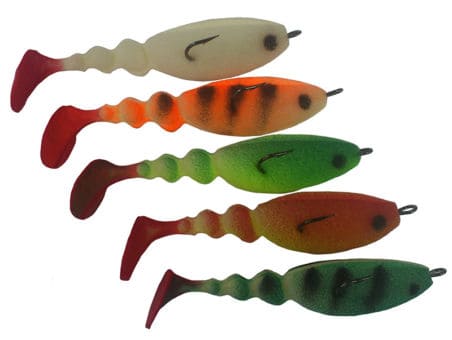
The material used is fed with attractants, emitting a delicious aroma for the aquatic inhabitants. This is how the name edible rubber appeared. The advantage of such a bait is that the fish, having picked it up, will not immediately understand that it was deceived. At this time, the angler is more able to make a high-quality hook.
According to the huge variety of configurations, nozzles have a large number of types:
A twister is a bait with an extended body and a mobile tail.
The vibrotail is more like a small fish, with its own stretchy body.
Octopus is the owner of an elongated empty body with tentacles. First of all, it was intended for sea fishing; it resembles a squid or an octopus. However, as it turned out, for example, in ponds, it can shake up half-asleep or lazy fish.
How to make homemade bait?
Many anglers note that homemade baits are more effective than baits purchased at a fishing store.
On a predator
The easiest bait to make with your own hands for a predator is a metal spoon. Financial costs will be minimal, since the technology does not require the use of expensive components. The spoon can be made from scrap materials.
By creating artificial fish baits, anglers can experiment and develop something new. To create a universal torpedo spoon that is suitable for any fishing conditions, you will need the following components:
- stainless steel or other thin sheet metal (you can use an aluminum container cut into several pieces);
- thin wire or guitar string;
- 2 swivels;
- hook;
- paste GOI;
- winding rings.
To make such a bait for predatory fish, you need to perform the following steps:
- Draw a template for the future spinner. The aluminum contour must be cut carefully. It is recommended to first draw the outline on thick cardboard, and then transfer the drawing to aluminum. You can take a tablespoon and trace its outline on the workpiece.
- Fold the workpiece in half to make 2 symmetrical parts.
- Sand the rough edges with sandpaper.
- Solder the fasteners to the aluminum template. The fastening consists of 2 swivels, which are connected using a thin wire. If possible, it is better to use a guitar string instead of wire.
- After completing the above steps, you can attach the hook to the swivel, and the spoon will be ready for use. But it can be made more attractive to fish by polishing it with GOI paste. It is necessary to take into account that the fishing line may break if you tie it directly to the spoon. This can be prevented by using winding rings. The weight of the spinner will depend on how much solder is applied to it.
At home, you can make a “non-hooking” spinner. To do this you will need the following components:
- metal wire;
- a small piece of flexible plastic;
- aluminum billet;
- hook.
To make this homemade bait for predatory fish, you need to perform the following steps:
- Attach the hook to the workpiece using soldering. This can be a single or double hook.
- You need to cut out 2 thin “antennae” from plastic and attach them on the inside so that they overlap the hook.
- Solder the spinner to the wire.
For peaceful fish
There are many recipes for bait for different fish, suitable for home use. Bread is the simplest soft bait for fishing, available to everyone. To prepare such an attachment, you can use rye or white bread, a loaf, or a sweet roll.
The crumb must be separated from the crust, then add a few drops of water to it and knead by hand. You should get a dense elastic lump, from which small balls are separated and put on a hook.
Bread is more effective if you add a few drops of flavoring (for example, sunflower oil).
If you plan to fish with corn, it is best to use canned fish, which are sold in grocery stores. But if this is not possible, you can use boiled corn, separated from the cob. No more than 2 grains are put on the hook.
Peas for fishing are more difficult to prepare. It needs to be poured into a vessel with water and kept there until it becomes softer. Then cook the peas over low heat for 1 hour. If necessary, only boiled water can be added.
After 1 hour, the water needs to be salted. The peas along with the liquid are poured into a pan with a metal mesh at the bottom. 1 more mesh is placed on top, after which it needs to be pressed down with some weight. The pan needs to be put on fire for 40-50 minutes.
After this time, the water is drained and the peas are dried on paper or a rag. After the peas are dry, they are placed in a container of water and stored in the refrigerator.
To prepare pearl barley, you will need 1 glass of cereal, which is filled with 6 glasses of water. It is recommended to add a little sugar and salt. The barley is cooked for 20 minutes, and then another 30-40 minutes, but over low heat.
It must be stirred constantly until there is no water left on top. After cooking, you can add flavorings such as honey or sunflower oil.
Read: Preparing bait for carp
Artificial bait for fishing - how to choose
There is currently a wide variety of artificial baits for fishing in fishing shopping centers. In order to choose the right seducer for fishing for a predator, you should not break a number of usual rules. First of all, it should be noted that in the presence of daylight, vibrotails are slender, weakly active.
Almost always they come across as the most successful. Naturally colored baits catch fish all the time. Stunning colors, on the contrary, are used only when the reservoir is very cloudy. During darkening, the fish chooses a place to hunt in the middle layers of the reservoir. Where is it possible to catch them using tightened wobblers.
In addition, fast-playing silicone tips are suitable for this. The selection of bait should not in any way affect the presence of fish in the water. Unfortunately, such baits are quite soft, so they are more suitable for static fishing rather than intensive fishing. Happy fishing!
If you are satisfied with the article, please share it with your friends.
What are the benefits of Artificial Spinning Lures?
As for artificial baits, they have no such shortcomings, and I would say no disadvantages. They are available in sufficient quantities in any fishing store, they can be selected in any size, color, depending on what kind of fish and on what body of water you are going to catch, as well as the time of year and day and night.
In a word, the advantages are also considerable, and these advantages can be listed and listed. These are just a few reasons why they have gained worldwide recognition among anglers and are widely used.
When using artificial baits, you do not need to prepare them and then store them, as happens with live bait, and when transporting over long distances there are no problems, unlike transporting live bait.
And whoever is a jack of all trades, with limitless imagination, they make such Lures with their own hands that they are sometimes in many ways superior to baits bought in a store.

3 ways to improve your fish bite!
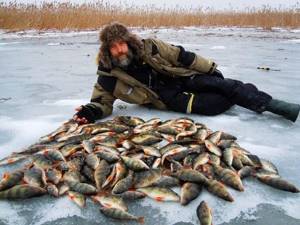
Over 15 years of active fishing, I have found many ways to improve the bite, and here are the most effective:
1. Bite activator . This pheromone additive attracts fish most strongly in cold and warm water. The Fish Hungry bite activator has proven itself to be excellent - Read more…
2. Tackle with increased sensitivity . You should first familiarize yourself with the features of using a particular type.
3. Pheromone baits . They attract the attention of fish, stimulate hunger and cause a schooling reflex, which allows you to collect a lot of fish in one place.
You can get the rest of the secrets of successful fishing for free by reading my other materials on the site.
3 ways to improve your fish bite!
Over 15 years of active fishing, I have found many ways to improve the bite, and here are the most effective:
1. Bite activator . This pheromone additive attracts fish most strongly in cold and warm water. The Fish Hungry bite activator has proven itself to be excellent - Read more…
2. Tackle with increased sensitivity . You should first familiarize yourself with the features of using a particular type.
3. Pheromone baits . They attract the attention of fish, stimulate hunger and cause a schooling reflex, which allows you to collect a lot of fish in one place.
You can get the rest of the secrets of successful fishing for free by reading my other materials on the site.

